Goat Milk Shampoo Bars: A Recipe for Healthy Hair
Learn how to make a goat milk shampoo bar recipe that lathers beautifully and nourishes your hair. Includes oil swaps, tips, and curing guidance.

These goat milk shampoo bars have a generous helping of castor oil for a rich lather and plenty of goat’s milk for a creamy, nourishing feel. Shea (or mango) butter adds moisture while helping the bars harden nicely. Once you try this natural shampoo, you’ll wonder how you ever used store-bought.
This recipe comes from Jan Berry’s book Simple Natural Soapmaking, one of my go-to resources for botanical soaps.
Before You Begin: Preparing the Goat Milk
Before making these shampoo bars, you’ll need to freeze the milk. To do so, weigh out the amount of milk you need for the recipe directly into ice cube trays. Freeze until solid, and store the cubes in freezer bags until you are ready to make the soap.
Freezing prevents the milk from scorching when you add lye.

Making the Best Shampoo Bar Ever
Yield: 7 to 8 bars of soap (2.5 lbs/1.13 kg)
Lye Solution
8.5 oz (241 g) frozen goat’s milk
0.5 oz (14 g) distilled water
3.9 oz (111 g) sodium hydroxide (lye)
Oils
7.5 oz (213 g) coconut oil
3 oz (85 g) shea or mango butter
10.5 oz (298 g) olive oil
3 oz (85 g) sweet almond or sunflower oil
4 oz (113 g) castor oil
Essential Oil
1.23 oz (35 g) of lavender essential oil, optional
Substitutions and Tips
So that you are aware, you must weigh all ingredients. You’ll need an accurate scale to make soap.
To replace the shea or mango butter, use lard or tallow instead. The lye amount will stay within an acceptable range for either change and will not need to be adjusted.
If you are allergic to coconut oil, try using an equal amount of babassu oil in its place. The lye amount should be slightly reduced to 3.85 ounces (109 g) for this replacement. Almond and sunflower oil can be swapped for avocado, apricot, or jojoba, just recalculate the lye using SoapCalc or Bramble Berry’s calculator.
If you’re brand new to soapmaking, you might want to start with something a little simpler first. My guide on getting started with melt-and-pour soap walks you through the basics—no lye, no stress.
Directions for Making Goat Milk Shampoo Bars
Place the frozen goat’s milk and water in a heavy-duty plastic or stainless steel bowl. Wearing protective gloves and eyewear, carefully sprinkle a small amount of lye at a time over the frozen milk, stirring well after each addition. The entire process will take several minutes, but working slowly ensures that the milk doesn’t scorch and that the lye completely dissolves. The lye solution does not need to cool further before being added to the oils.
Melt the coconut oil and shea butter, then add them to the other oils. Add the lye/milk solution to the oils. Using a combination of hand stirring and an immersion blender (stick blender), stir the soap until it reaches a very light trace. Trace is when the soap has thickened enough that when you drizzle a small amount of the batter across the surface, it will leave a fleeting but visible imprint or “trace,” before sinking back in. At trace, stir in essential oil, if using, then pour into a prepared mold.
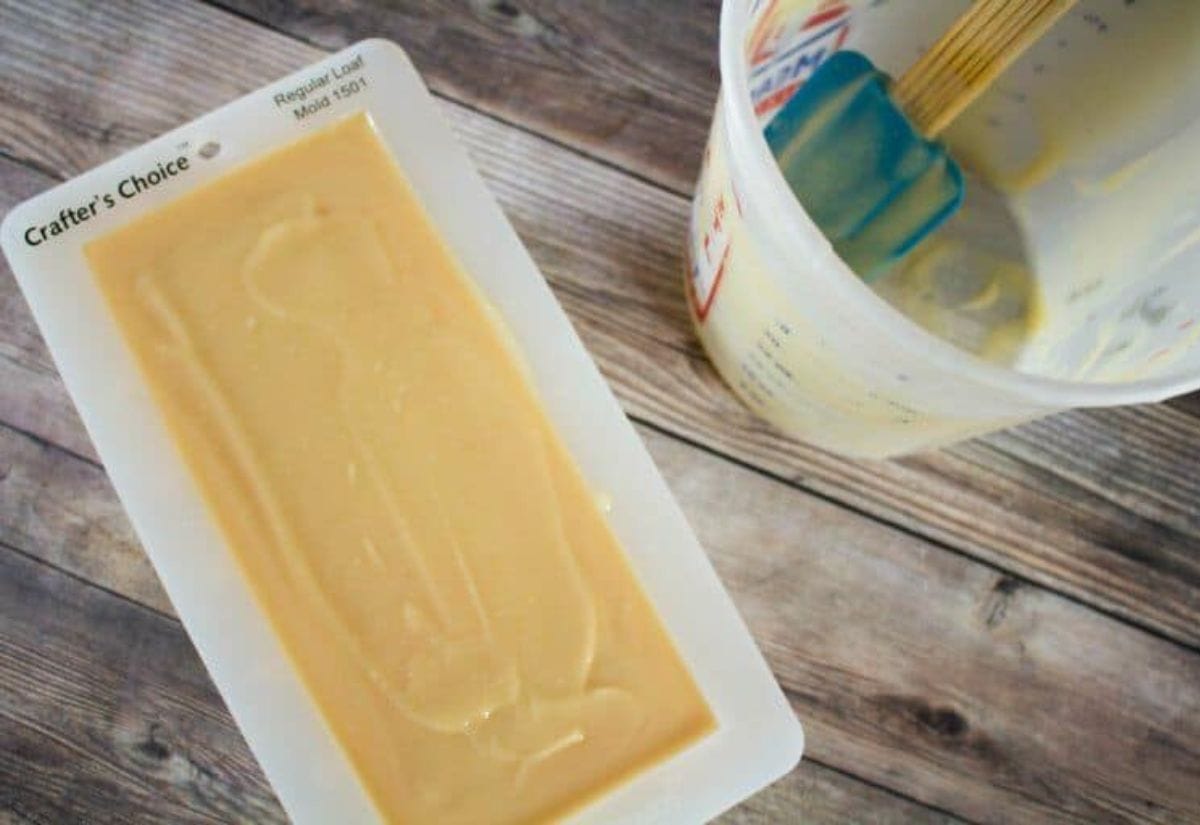
Jan recommends the Crafter’s Choice Silicone Soap Mold.
Let the soap stay in the mold for 24 hours. The next day, you’re ready to unmold and slice into bars. It is safe to use your soap after a few days, but I recommend putting the soap somewhere cool, dry, and with good airflow for four to six weeks. The extra water will evaporate, making the bars harder, so they last longer in the shower.
Why Goat Milk Is So Good for Hair
The proteins and fatty acids in goat milk shampoo bars nourish hair and make it naturally shiny. If you have curls, goat’s milk shampoo will help control frizz and make your curls sculpted. Also, because it’s gentle and it helps to moisturize the skin, you may find dandruff relief after using goat milk shampoo bars. You may also see some boosted hair growth.
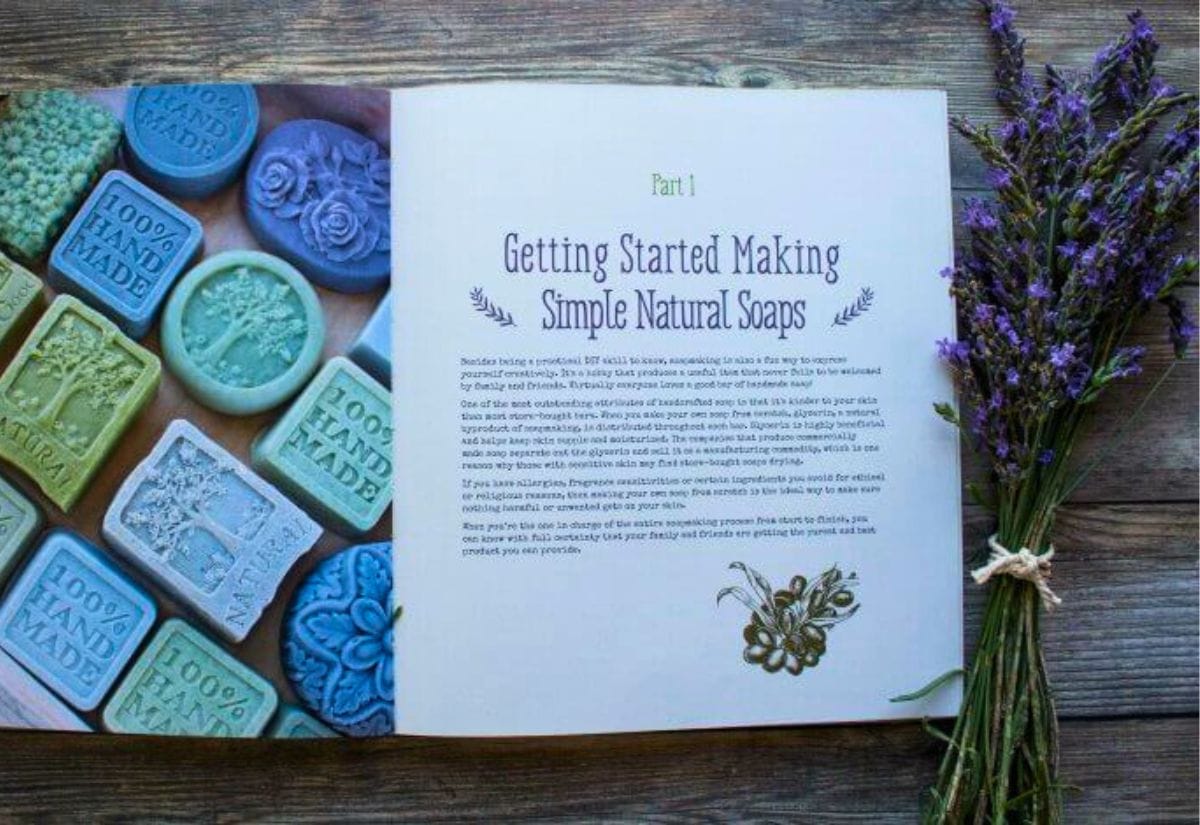
If you’re looking for more great soap recipes, I highly recommend getting a copy of Simple Natural Soapmaking. Herbalist Jan Berry offers everything a modern-day enthusiast needs to make incredible botanical soaps. Beginners can join in the sudsy fun with detailed tutorials and step-by-step photographs for making traditional cold-process soap and the more modern hot-process method with a slow cooker. Jan presents fifty easy, unique soap recipes with ingredients and scents inspired by the herb garden, veggie garden, farm, forest, and more.
Benefits for the Body, Too
Goat milk soap offers the same benefits for the body as it does for the hair. Commercial soaps contain surfactants that strip your skin of its natural moisture and oils, leaving it feeling dry and tight. Packed with skin-loving fatty acids, like caprylic acid, goat milk soap cleans without stripping your skin of its natural oils, leading to dry skin.
Goat milk’s lactic acid content helps to gently remove the top layer of dead skin cells, allowing for natural exfoliation. Unlike other alpha-hydroxy acids, lactic acid is known as one of the gentlest AHAs, making it an ideal choice for those with sensitive skin.
Once you fall in love with making your own goat milk soap, you’ll want to keep experimenting with natural skincare. My soothing and healing hand cream recipe is another favorite for dry hands after chores or garden work.
Other Goat Milk Soap Recipes You’ll Love
Once you get comfortable working with goat milk in soapmaking, it’s easy to branch out. Here are a few of my favorite recipes to keep your skin soft and happy year-round.
- Pure White Natural Goat Milk Soap: A simple and nourishing soap recipe, especially for sensitive skin.
- Honey & Oat Goat’s Milk Soap: This is soothing and calming for dry, irritated skin, and it’s a melt-and-pour recipe if you don’t feel prepared to make soap from scratch.
- Oatmeal Raisin Goat’s Milk Soap: This soap smells so good, you’ll almost want to eat it. It is made with a spicy blend of cinnamon and clove essential oils, oats, and raisins.
Common Goat Milk Shampoo Bar Questions
Whether you’re new to soapmaking or just curious how goat milk works in shampoo bars, here are a few quick answers to help you feel confident before your first batch.
If you’re looking for more self-care ideas, I’ve also got a delightful recipe for a luxurious milk and honey bath soak that pairs perfectly with these goat milk shampoo bars!
Don’t lose track of this one! Pin it now so it’s handy next time you’re in a soapmaking mood.
Goat milk shampoo bars are an excellent option for those looking to switch to more natural products. They are easy to make, cost-effective, and environmentally friendly. Follow your shampooing with an apple cider vinegar rinse, and your hair will amaze you!
Have you ever tried making your own shampoo bars, or do you have any favorite additions you’d recommend for a personalized touch? I’d love to hear about your experiences and unique twists on goat milk shampoo bars in the comments below.
Lavender Goat Milk Shampoo Bars
This post may contain paid links. If you make a purchase using the links in this recipe, I may earn a commission.
Equipment
- 1 Kitchen Scale
- 1 Ice Cube Tray
- 1 Heavy Duty Plastic or Steel Bowl
- 1 Pair of Gloves and Eyewear
- 1 Soap Mold loaf shaped
Ingredients
Lye Solution
- 241 g Goat’s Milk frozen
- 14 g Water distilled
- 111 g Sodium Hydroxide lye
Oils
- 213 g Coconut Oil
- 85 g Shea Butter or mango
- 298 g Olive Oil
- 85 g Sweet Almond Oil or sunflower
- 113 g Castor Oil
Essential Oil
- 35 g Lavender Essential Oil optional
Instructions
- You’ll need to freeze the milk. To do so, weigh out the amount of milk you need for the recipe directly into ice cube trays. Freeze until solid.241 g Goat’s Milk
- Place the frozen goat’s milk and water in a heavy-duty plastic or stainless steel bowl. Wearing protective gloves and eyewear, carefully sprinkle a small amount of lye at a time over the frozen milk, stirring well after each addition.14 g Water, 111 g Sodium Hydroxide
- Melt the coconut oil and shea butter, then add them to the other oils. Add the lye/milk solution to the oils. Using a combination of hand stirring and an immersion blender, stir the soap until it reaches a very light trace.213 g Coconut Oil, 85 g Shea Butter, 298 g Olive Oil, 85 g Sweet Almond Oil, 113 g Castor Oil
- At trace, stir in essential oil, if using, then pour into a prepared mold.35 g Lavender Essential Oil
- Let the soap stay in the mold for 24 hours. The next day, you’re ready to unmold and slice into bars.

Hi, I’ve made two batches of tshampoo bars using this recipe and the Ph is between 9 and 10. What can I do to decrease it to around 5?
Diane
Cold process soap naturally has a higher pH—usually around 9—so it’s not possible to lower it to 5 without turning it into something else entirely. If you need a lower pH, a liquid surfactant-based shampoo might be a better fit.
I am interested to know why you add water to your goat milk shampoo. I have never added water to any of my goat milk soaps. Thanks!
Water helps create a smoother texture for the shampoo bar, making it easier to lather and apply to hair. Without water, the bar may be too hard, and it could be difficult to get a good amount of product onto your hair.
am i able for o replace the sunflower oil for apricot or jojoba oil? and if so will the lye also need to be changed?
Yes, you can swap oils, but you’ll need to recalculate the lye to match the new oil’s saponification value. A soap calculator like SoapCalc or Bramble Berry’s is super helpful for that.
Hello, I would like to avoid certain oils. Do you know if I can substitute avocado oil (or another oil) for the almond/sunflower oil? This recipe sounds amazing! I can’t wait to try it!
Absolutely! Avocado oil is a great sub for almond or sunflower—just be sure to run the recipe through a lye calculator to get the right amount of lye for the new mix.
Is this shampoo safe to use on dogs?
It certainly can be used on dogs, but I also have a dog-specific shampoo recipe: https://104homestead.com/making-natural-shampoo-dog/
Hi there, I was wondering if the goats milk had to be raw or pasteurized?
What brand of essential oil did you use for this recipe? Is using a full 1oz necessary because essential oils can be expensive.
I ran this through soap calc and it gave me a different % water
I’m pretty new but I was also told by a soaping group that the “cleansing” of this bar could be to harsh? I’m not sure what I’m asking exactly but should I be worried or is this a tried and true recipe
Is it possible to make soap without lye, or is it a necessary ingredient?
Soap isn’t soap without the chemical process between lye and the oils. It’s just oil with an added liquid. Once the soap is cured there is no more lye, and the chemical reaction is complete
Hi, I am a high school student that is using this recipe for a soap-making project and I was wondering what size mold you used for this soap and at what temperature did you heat the mixture at the first step to melt the goats milk and water. Thank you! Lovely recipe.
Hi. I know this comment is coming late, but I will answer anyway. You don’t heat the lye and goat milk/water mixture. You freeze the goat milk because when you add the lye to the goat milk (never the other way around), it heats up a lot because of the chemical reaction. It will scorching the milk easily if you don’t cool the milk. I would highly recommend starting with a recipe that doesn’t include milk, as that complicates things. Find a good book or more detailed instructions for making your first batch of soap. It’s not hard, but there are some things you do need to be careful about and it can seem complicated at first. Soap making is awesome. I’ve been doing it for about 6 years now. Best of luck!